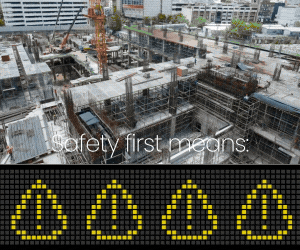The Department of Public Safety Communications and Emergency Management for Arlington County, Va., is using Amazon Bedrock AI workflows to reroute nonemergency calls made to PSAPs.
At the AWS Summit in Washington, D.C., PSCEM Operations Manager Timothy Kane said nonemergency PSAP call volume decreased in the first quarter of deployment as more calls were redirected using an AI workflow. Average call length also dropped from 129.3 seconds per call to 105.2 seconds. Lower call volumes and shorter calls combined saved 829 hours that would have otherwise been spent on administrative calls, which amounts to 9.12 hours per day.
“We have people now who are more available to answer a 911 call because they're not tied up on an admin call,” Kane said.
Click the banner below to learn more about public safety solutions and services.
Towing and Fire Alarm Inquiries Hogged Resources
“Most PSAPs are legacy leftovers from a police department or fire department somewhere, and in the last 15 to 20 years, they've branched out to become an independent agency on their own,” Kane said.
Like many other jurisdictions, Arlington County’s PSAPs don’t distinguish between administrative and 911 call takers in queues. In 2022, Arlington PSCEM logged between 140,000 and 180,000 administrative, nonemergency calls compared with 80,000 to 85,000 emergency calls. Towing and fire alarm queries represented the two largest buckets for call types that year, accounting for a combined 43,415 administrator calls.
“We were spending about three hours per shift answering those phone calls,” Kane said. “That's 43,415 fewer opportunities for us to answer an emergency call.”
Click the image below for more coverage related to public safety and critical infrastructure.

104,250 Workflow Interactions Are Offloaded to AI
Between May 2024 and May 2025, AI executed more than 104,250 call workflows in Arlington County, an average of about 300 administrative calls per day, Kane says.
An initial data collection phase was conducted before launch to better understand the most common types of administrative calls. The county ported its nonemergency number to an AWS number to collect the information. By gathering utterances — words and phrases used to interact with the AI — the county was able to identify the top reasons for calling the nonemergency line. This information became the basis for specific workflows that direct callers to the proper resource.
Common nonemergency workflows created by Arlington County include police reports, storm damage, graffiti reports and inquiries about snow and upcoming events. These workflows run continuously and can be temporarily prioritized in greetings. For example, every October, Arlington County hosts the Marine Corps Marathon.
“So, about two weeks before the race, we'll change our greeting,” Kane said. “And it can be preset to drop off after the race, so it's not there anymore.”
RELATED: Cloud contact centers benefit state and local residents.
SMS Contact Is Coming to Arlington County
Kane said he wants to reduce the volume of people calling in the first place by instituting an SMS program built on AWS technology that lets residents text inquiries to predetermined short codes.
“22201 will be one of those short codes,” he said. “That's also the Clarendon ZIP code for that part of Arlington.”
He also hopes to use AI-based language translation in the future to provide automated, multilingual support.
Kane stressed that AI and automation are not replacements for human call takers and that emergency calls are best left to human call takers for the foreseeable future.
“AI is great, and someday maybe it will have empathy and the passive listening skills, but I don’t know that we’re there yet,” he said. “My intent right now is to free up those people who can answer 911 calls.”













